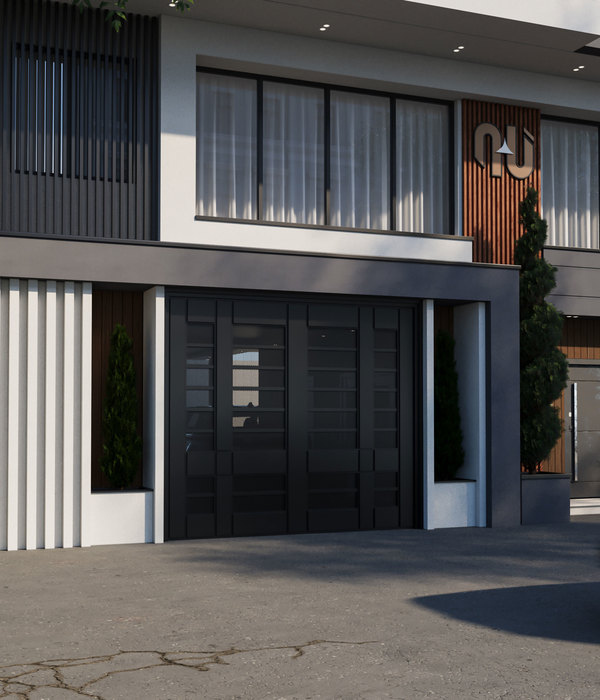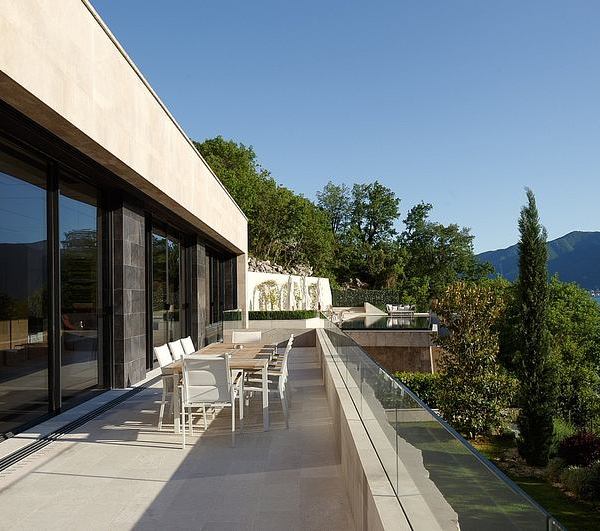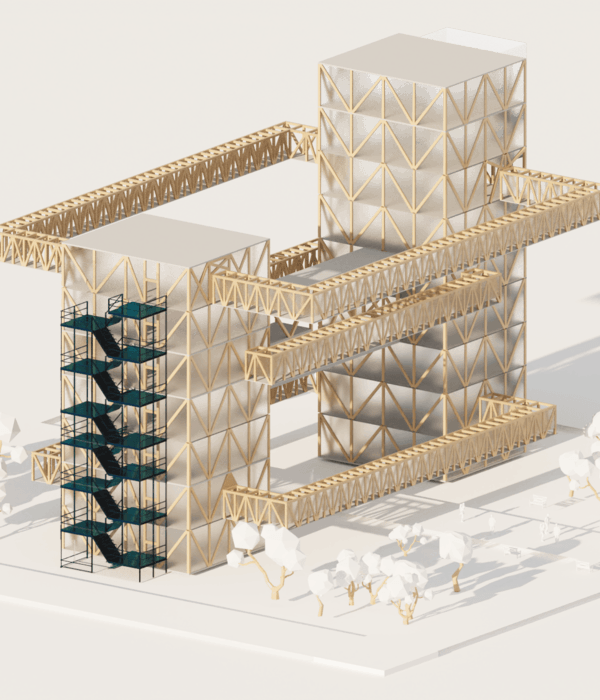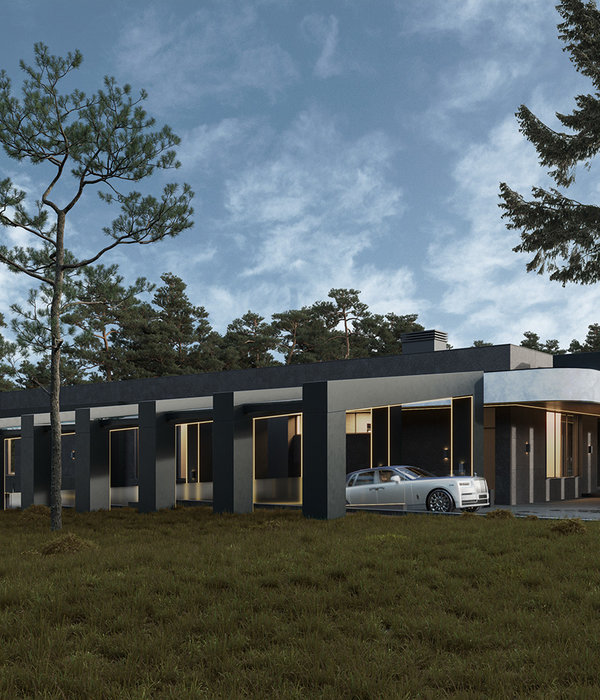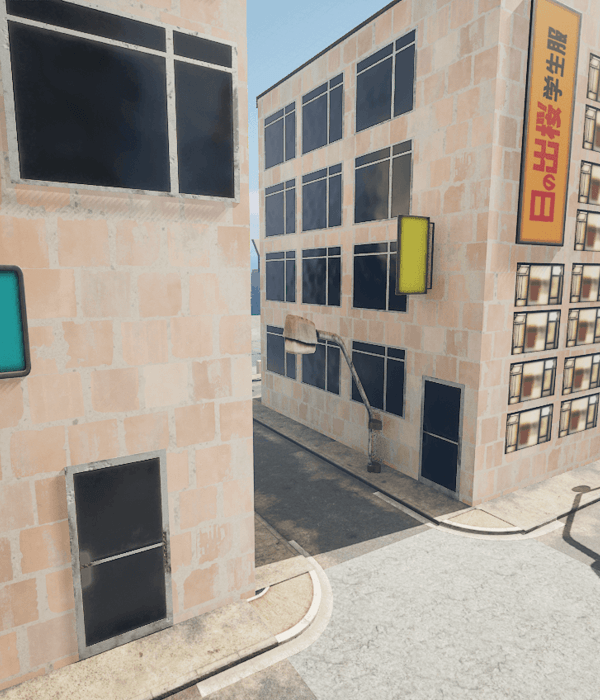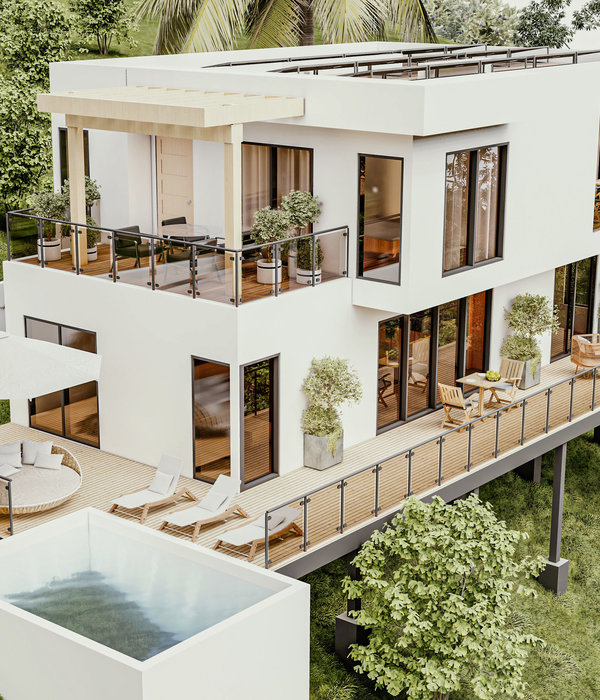Poland Ericpol Software Pool
设计方:HORIZONE Studio
位置:波兰
分类:办公建筑
内容:实景照片
设计团队:Dominik Darasz, BartlomiejKisielewski, Robert Strzenski
合作方:JagodaBoguslawska, KrystianWawer, Nuno Oliveira
承包方:STRABAG
图片:16张
摄影师:WojciechKrynski, Piotr Piatek
这是由HORIZONE Studio设计的Ericpol软件园。该项目可追溯到2011年11月,波兰最大的ICT公司之一Ericpol购买了这块位于罗兹市中心Sienkiewicza街与Tymienieckiego相交汇之处的弃置土地。这里曾是奥林匹克游泳池的场地,在共产主义时期曾一度流行,而后因弃用而年久失修。场地一侧有新文艺复兴的Scheibler宫、花园、纪念碑,另一侧是后工业建筑遗址,已被改造成艺术园区。
该项目的主要挑战在于同时满足功能和遗产保护的需求。通过对场地进行全景分析,办公楼选择了四层高的实体建筑形式,并设两座翼楼,通过一道玻璃连接物相连接。建筑设计基于字母X布局,有助优化场地的使用和满足投资者的功能项目布局需求。项目中的建筑语言加强了建筑自身与环境之间的清晰联系。公园绿化渗透入建筑内部,限制着建筑的发展强度。办公室空间的布局提供了最大限度的灵活性。
译者:艾比
From the architect. The history of the project dates back to December 2011 when Ericpol, one of Poland’s largest ICT companies, purchased a derelict plot in the centre of Lodz at the junction of Sienkiewiczastreet and Tymienieckiego street. It used to be the site of the Olimpia swimming pool, popular in communist times, which had fallen further and further into disrepair over recent decades.
The estate lies next door to the neo-Renaissance Scheibler Palace and incorporates a fragment of the former formal gardens of the palace which include five monuments of nature. The Regional Heritage Preservation Office has placed the entire area under its protection.The relics of post-industrial architecture situated on the other side of Tymienieckiego Street, formerly forming part of the KsiezyMlyn (literally, ‘Priests’ Mill’) industrial and residential complex, were transformed into ART_Inkubator. Teeming with life, it consists of offices, art workshops, and multifunctional cultural space.
The main challenge presented by the project was the alignment of the functional requirements with the limitations imposed by the heritage preservation officer and the restrictive conditions imposed on the development. Resulting from the panoramic analyses conducted, the office building was given the form of a four-storey-high solid with two wings, linked in its central section by a glazed connecting section (housing the lobby with the lifts and the glazed conference rooms). This is the origin behind the building design based on a plan approximating the letter X whose form allowed the optimum use of the area and conformed to the functional programme commissioned by the investor. The architectural language applied in the project reinforced its clear relations with the environment. The green wedge of the park enters deeply into the building, limiting the intensity of development. The form applied provided for major flexibility in the arrangement of office space. The functional division was adjusted to the specific nature of the work of its future users and to the investor’s strict requirements concerning security and access control.
Designing the façades, the architects tried to make a connection to the context of the 19th-century industrial development of Lodz while at the same time losing nothing of the contemporary language of architecture.Whole surfaces of the façades were clad with light-grey, hand-formed and traditionally fired brick coming from a Danish manufacturer, Petersen Tegl. This sophisticated structure, a result of meticulous arrangements agreed with the Lodz regional heritage preservation officer, gave the building a unique, mottled colour and provides a background for the colour accents in the façades. The contemporary glazed surfaces with vertical sunshades, whose character makes a link to the colour range recorded in Ericpol’s visual identification, repeat the rhythm of the façades of 19-century factory developments in Lodz.. The creative interpretations of local traditions expressed in contemporary form, makes the new architecture clear and legible in its environment.
One of the first analyses performed by Horizone Studio was testing the potential heights of individual floors in the context of limiting the building height to 16 metres. It turned out that the space available was approximately 1.5 m too short to allow the rooms to be of comfortable height (3 metres) and to allow the introduction of suspended ceilings behind which the air conditioning and mechanical ventilation systems could be installed. Therefore, in agreement with HVAC engineers, a decision was made to scrap the suspended ceilings together with a traditional air conditioning system. In return, the office spaces on floors from 1 to 3 received the so-called Thermally Activated Building Systems (TABS) slabs. In this system, the concrete slabs contain pipes that, when filled with ice water, cool down the concrete, which in turn chills the air thus lowering the temperature inside the rooms. To increase the efficiency of the TABS installation, the air coming from the mechanical ventilation is also pre-cooled. The system proved sufficient for 90% of the office space, and only the conference rooms and the high ground floor spaces were given a traditional form of air conditioning. The TABS system has another advantage: it ensures thermal comfort for the staff with no areas of concentrated cold air inflow, as the ceilings chill the entire space uniformly, although the significant inertia and the reaction time lag may be a drawback. That is why cooperation with NirasPolska on design work included development of the so-called neuronal model of the building. This is an additional algorithm included in the Building Management System which analyses the data received from sensors placed throughout the site and in a way makes the building ‘learn’ its behaviour with time. Additionally, the system has online connections to two independent metrological stations to read weather forecasts and adjust to them with appropriate advance notice.
A consequence of giving up suspended ceilings was the idea to use exposed architectural concrete for the ceilings. This gave the interiors an original, industrial character. The precise rhythm of the formwork boarding, based on the typical dimensions of the plywood boards, defines a rhythm that is repeated by the lamps suspended under the slabs and by elements of the acoustic panels. Although the TABS piping makes it possible to drill the slabs to a certain depth (defined as 10 cm for the project), it does, however, render any through drilling difficult. Thus all the perforations necessary for the assembly of lamps and installation of connecting cables had to be planned at the architectural and construction design stage. During construction, Strabag contracted to perform the actual works, surveyed the structure to define hundreds of such potential points at the stage of formwork to increase the precision of works.
Architectural concrete was also used to design the internal surfaces of the eastern and western walls, and those of the staircase wells. The contractor was obliged to first create large-scale mock-ups before the construction stage and select an appropriate concrete mix and technology, and only later to deliver onsite the required standard of the concrete elements.
Most offices feature mixed mode ventilation which combines both natural and hybrid ventilation. To protect the rooms from overheating, external blinds and appropriate glass parameters were specified. The interior corridors are designed so that each could end in a large panel of glass, thus providing additional light and maintaining links with the environment. The partitions of the main conference halls are made of glass so as not to build excessive divisions within either of them. The sun path analysis conducted at the design stage made it possible to differentiate the glazing of the façades, depending on their exposure to direct sunlight. Southern, eastern, and western faces were provided with double glazing units built of highly selective glass with low-emission coating which protects against excessive heat surges in summer. In turn, the northern façade, vulnerable to greater heat losses in winter, received triple glazing units with low emission glass. Additionally, the glazed surfaces received external sun-stopping blinds controlled through the BMS system. Thanks to the perforations of the blinds, even when they are pulled down, the users inside the building can enjoy a view of the park landscape surrounding it.
波兰Ericpol软件园外部实景图
波兰Ericpol软件园内部实景图
波兰Ericpol软件园夜景实景图
波兰Ericpol软件园平面图
{{item.text_origin}}




